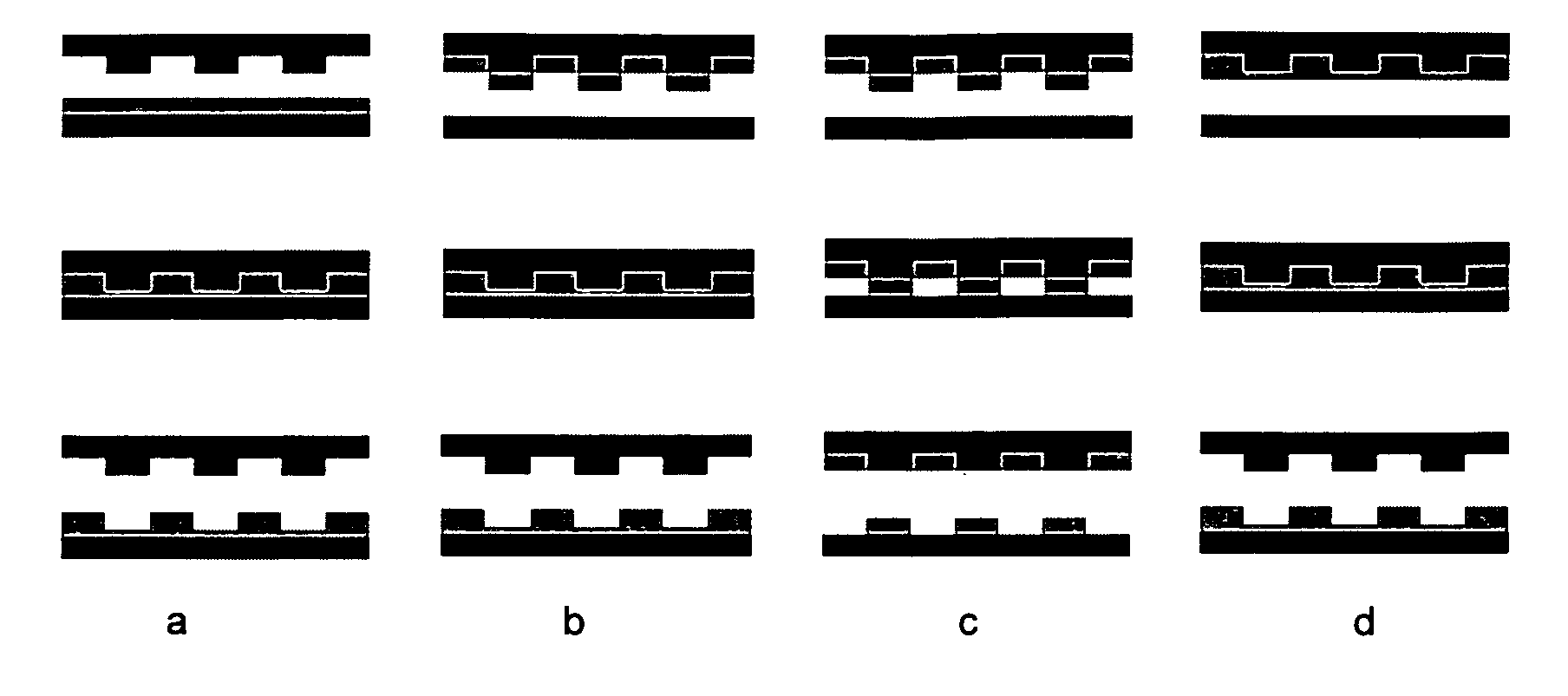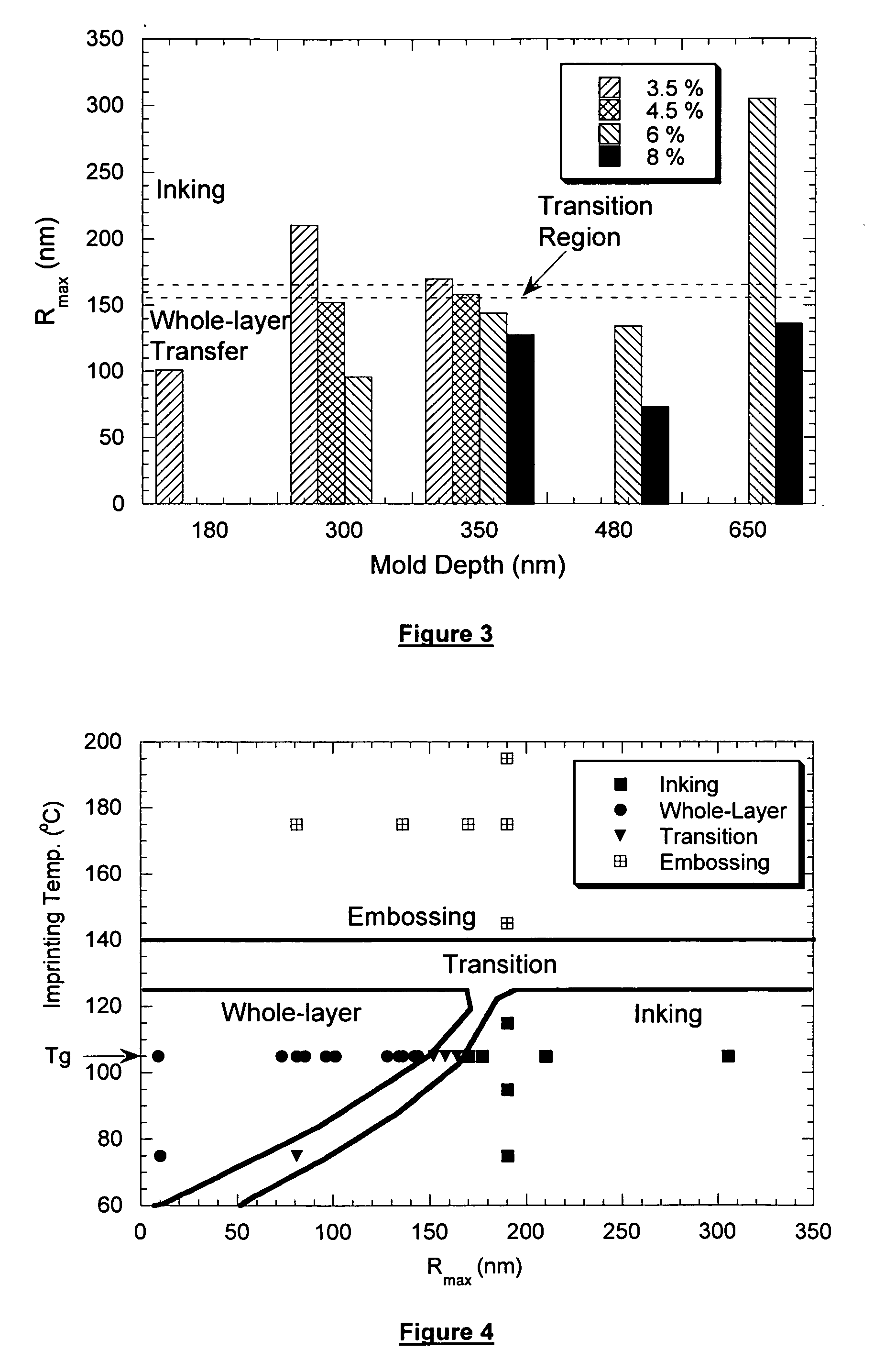Reversal imprint technique
a technology of imprinting and imprinting, applied in the field of micro/nanoscale structures, can solve the problems of reducing the resolution and fidelity of the final pattern or structure, restricting the type of substrate that can be used, and limiting the type of nanostructure produced on many potential substrates, so as to achieve the effect of low residue thickness
- Summary
- Abstract
- Description
- Claims
- Application Information
AI Technical Summary
Benefits of technology
Problems solved by technology
Method used
Image
Examples
Embodiment Construction
[0037] Experimental
[0038] Two kinds of patterned molds were used in our study. The molds were made in SiO2 on silicon (Si) wafer and patterned by optical lithography and subsequent dry etching. One mold had features varying from 2 to 50 μm and a nominal depth of 190 nm. The other mold had uniform gratings with a 700 nm period and a depth ranging from 180 to 650 nm. All molds were treated with an surfactant, 1H,1H,2H,2H-perfluorodecyl-trichlorosilane, to promote polymer release. The substrates used were polished (100) Si wafers and flexible, 50 μm thick polyimide films (Kapton®). Poly(methyl methacrylate) (PMMA) with a molecular weight of 15,000 was used for imprinting. In a typical reversal imprinting experiment, a mold was spin coated with a PMMA toluene solution at a spin rate of 3,000 rpm for 30 seconds and then heated at 105° C. for 5 min to remove residual solvent. The coated mold was pressed against a substrate in a pre-heated hydraulic press under a pressure of 5 MPa for 5 m...
PUM
| Property | Measurement | Unit |
|---|---|---|
| pressure | aaaaa | aaaaa |
| pressure | aaaaa | aaaaa |
| Tg | aaaaa | aaaaa |
Abstract
Description
Claims
Application Information
 Login to View More
Login to View More - R&D
- Intellectual Property
- Life Sciences
- Materials
- Tech Scout
- Unparalleled Data Quality
- Higher Quality Content
- 60% Fewer Hallucinations
Browse by: Latest US Patents, China's latest patents, Technical Efficacy Thesaurus, Application Domain, Technology Topic, Popular Technical Reports.
© 2025 PatSnap. All rights reserved.Legal|Privacy policy|Modern Slavery Act Transparency Statement|Sitemap|About US| Contact US: help@patsnap.com



